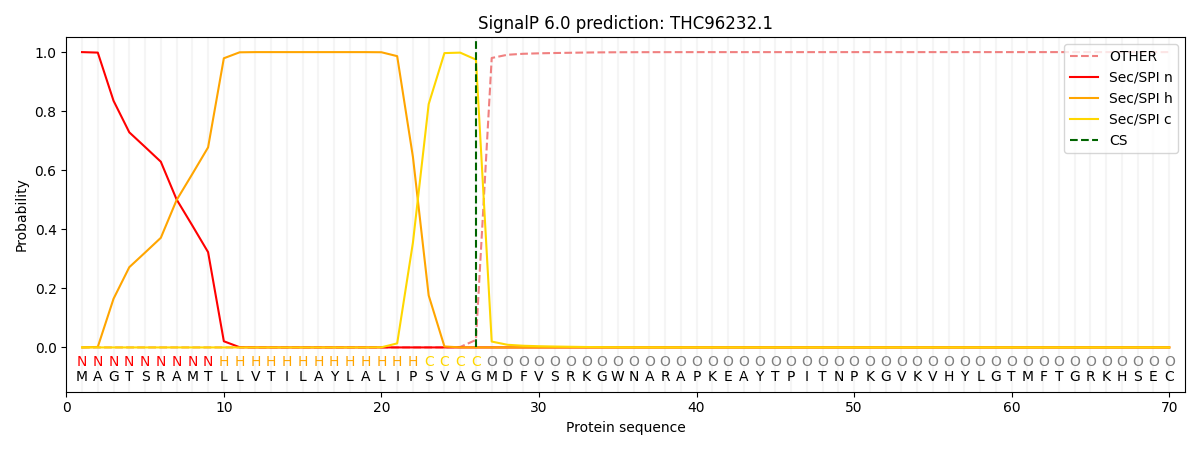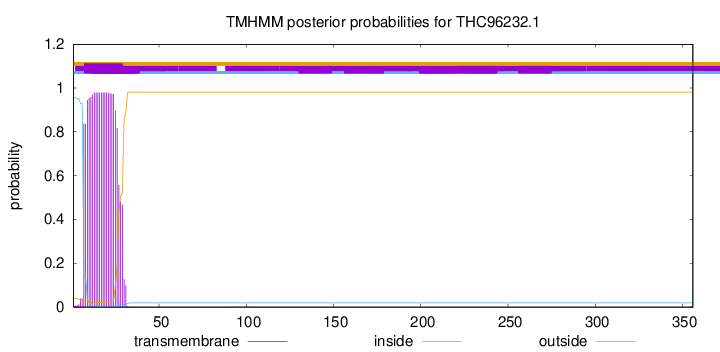You are browsing environment: FUNGIDB
CAZyme Information: THC96232.1
You are here: Home > Sequence: THC96232.1
Basic Information |
Genomic context |
Full Sequence |
Enzyme annotations |
CAZy signature domains |
CDD domains |
CAZyme hits |
PDB hits |
Swiss-Prot hits |
SignalP and Lipop annotations |
TMHMM annotations
Basic Information help
| Species | Aspergillus tanneri | |||||||||||
|---|---|---|---|---|---|---|---|---|---|---|---|---|
| Lineage | Ascomycota; Eurotiomycetes; ; Aspergillaceae; Aspergillus; Aspergillus tanneri | |||||||||||
| CAZyme ID | THC96232.1 | |||||||||||
| CAZy Family | GT8 | |||||||||||
| CAZyme Description | LysM domain-containing protein [Source:UniProtKB/TrEMBL;Acc:A0A4S3JL69] | |||||||||||
| CAZyme Property |
|
|||||||||||
| Genome Property |
|
|||||||||||
| Gene Location | ||||||||||||
CDD Domains download full data without filtering help
| Cdd ID | Domain | E-Value | qStart | qEnd | sStart | sEnd | Domain Description |
|---|---|---|---|---|---|---|---|
| 411663 | PG_bind_siph | 3.44e-32 | 273 | 348 | 1 | 76 | peptidoglycan-binding domain. This domain occurs shows apparent homology to known or putative peptidoglycan-binding domains in families such as PF01471. The domain occurs once, or twice, at the C-terminus of proteins such as cell wall amidases. In particular, member proteins can be found among putative lysins of phage of Streptomyces from the Siphoviridae family, such as phiBT1. |
| 133475 | PGRP | 3.25e-15 | 49 | 178 | 1 | 124 | Peptidoglycan recognition proteins (PGRPs) are pattern recognition receptors that bind, and in certain cases, hydrolyze peptidoglycans (PGNs) of bacterial cell walls. PGRPs have been divided into three classes: short PGRPs (PGRP-S), that are small (20 kDa) extracellular proteins; intermediate PGRPs (PGRP-I) that are 40-45 kDa and are predicted to be transmembrane proteins; and long PGRPs (PGRP-L), up to 90 kDa, which may be either intracellular or transmembrane. Several structures of PGRPs are known in insects and mammals, some bound with substrates like Muramyl Tripeptide (MTP) or Tracheal Cytotoxin (TCT). The substrate binding site is conserved in PGRP-LCx, PGRP-LE, and PGRP-Ialpha proteins. This family includes Zn-dependent N-Acetylmuramoyl-L-alanine Amidase, EC:3.5.1.28. This enzyme cleaves the amide bond between N-acetylmuramoyl and L-amino acids, preferentially D-lactyl-L-Ala, in bacterial cell walls. The structure for the bacteriophage T7 lysozyme shows that two of the conserved histidines and a cysteine are zinc binding residues. Site-directed mutagenesis of T7 lysozyme indicates that two conserved residues, a Tyr and a Lys, are important for amidase activity. |
| 128941 | PGRP | 4.05e-13 | 30 | 155 | 4 | 123 | Animal peptidoglycan recognition proteins homologous to Bacteriophage T3 lysozyme. The bacteriophage molecule, but not its moth homologue, has been shown to have N-acetylmuramoyl-L-alanine amidase activity. One member of this family, Tag7, is a cytokine. |
| 212030 | LysM | 4.33e-10 | 200 | 243 | 2 | 45 | Lysin Motif is a small domain involved in binding peptidoglycan. LysM, a small globular domain with approximately 40 amino acids, is a widespread protein module involved in binding peptidoglycan in bacteria and chitin in eukaryotes. The domain was originally identified in enzymes that degrade bacterial cell walls, but proteins involved in many other biological functions also contain this domain. It has been reported that the LysM domain functions as a signal for specific plant-bacteria recognition in bacterial pathogenesis. Many of these enzymes are modular and are composed of catalytic units linked to one or several repeats of LysM domains. LysM domains are found in bacteria and eukaryotes. |
| 214760 | Ami_2 | 5.20e-09 | 49 | 177 | 2 | 126 | Ami_2 domain. |
CAZyme Hits help
| Hit ID | E-Value | Query Start | Query End | Hit Start | Hit End |
|---|---|---|---|---|---|
| 3.00e-131 | 15 | 250 | 21 | 256 | |
| 3.00e-131 | 15 | 250 | 21 | 256 | |
| 3.00e-131 | 15 | 250 | 21 | 256 | |
| 3.00e-131 | 15 | 250 | 21 | 256 | |
| 1.56e-65 | 27 | 345 | 1 | 306 |
PDB Hits download full data without filtering help
| Hit ID | E-Value | Query Start | Query End | Hit Start | Hit End | Description |
|---|---|---|---|---|---|---|
| 2.21e-06 | 89 | 191 | 57 | 161 | Chain A, amidase [Clostridium perfringens str. 13] |
Swiss-Prot Hits download full data without filtering help
| Hit ID | E-Value | Query Start | Query End | Hit Start | Hit End | Description |
|---|---|---|---|---|---|---|
| 1.80e-06 | 16 | 185 | 6 | 174 | Peptidoglycan recognition protein 1 OS=Mus musculus OX=10090 GN=Pglyrp1 PE=1 SV=1 |
|
| 9.06e-06 | 18 | 185 | 13 | 181 | Peptidoglycan recognition protein 1 OS=Bos indicus OX=9915 GN=PGLYRP1 PE=3 SV=1 |
SignalP and Lipop Annotations help
This protein is predicted as SP

| Other | SP_Sec_SPI | CS Position |
|---|---|---|
| 0.000264 | 0.999695 | CS pos: 26-27. Pr: 0.9746 |

